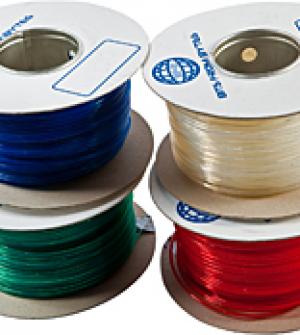PLA Material - Translucent

PLA (Polylactic Acid) is probably the easiest material to work with when you first start printing. PLA is a biodegradable thermoplastic that has been derived from renewable resources such as corn starch and sugar canes. This makes PLA environmentally friendly and very safe to work with.
PLA (Polylactic Acid) is probably the easiest material to work with when you first start printing. PLA is a biodegradable thermoplastic that has been derived from renewable resources such as corn starch and sugar canes. This makes PLA environmentally friendly and very safe to work with.
PLA also has a very sharp glass transition point so if you use a fan to cool it, on printing it will set to solid very quickly. This has the advantage of achieving a greater range of geometries than are possible with other plastics. It also reduces the thermal stress on the printed part - warping becomes less of an issue in larger parts when you print with PLA.
Finishing
PLA does not require any curing or post-production treatment, however should you wish to, PLA can be sanded and coated with automotive spray filler. PLA can also be painted over with acrylic paint.
|
POLYMER PROPERTIES |
PLA SOLID |
PLA TRANSLUCENT |
|
|
Print temperature |
210-225oC |
210-220oC |
|
|
Raft temperature |
190oC |
190oC |
|
|
First layer temperature |
200oC |
200oC |
|
|
Print base material |
MDF/Acrylic |
MDF/Acrylic |
|
|
Raft required |
Optional |
Optional |
|
|
Filament diameter |
3mm |
3mm |
|
|
Spool capacity |
1kg (equal to 49 cubic inches) |
1kg (equal to 49 cubic inches) |
|
|
|||
Please note: PLA can absorb moisture from the air. For optimum performance and preservation, store in a dry environment.
1kg PLA material rolled onto a spool


PLA is in fact better to use
PLA is in fact better to use with bigger structures when 3d printing. Warping is kept to a minmum and it doesnt smell like burning plastic. I give this a 10 out of 10 stars.